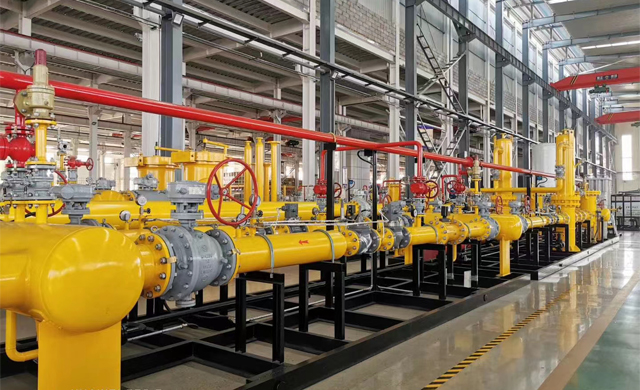
Sep . 06, 2024 23:37
Back to list
Natural Gas Pressure Reducing Station - Essential Solutions for Safe Gas Distribution
Natural Gas Pressure Reducing Station An Overview
Natural gas plays a crucial role in today's energy landscape, serving as a cleaner alternative to coal and oil for heating, electricity generation, and various industrial applications. One of the key components in the distribution of natural gas is the pressure reducing station (PRS), which ensures that the gas is delivered to consumers at safe and usable pressure levels.
A natural gas pressure reducing station is designed to lower the high pressure of natural gas exiting transmission pipelines to a suitable level for distribution to residential, commercial, and industrial users. This is important because natural gas is transported through pipelines at high pressures, often exceeding 1000 psi (pounds per square inch), to efficiently move it across long distances. However, end-users typically require much lower pressures, generally between 2-60 psi, depending on the application.
The primary function of a PRS is to reduce the pressure while maintaining the integrity and quality of the natural gas. The station consists of several key components, including pressure regulators, filters, flow measurement devices, and safety shut-off valves. When gas enters the PRS, it passes through a filter that removes impurities, such as dust and moisture, which could damage downstream equipment. After filtration, pressure regulators automatically adjust the gas pressure to the desired level. These regulators ensure that fluctuations in the pipeline pressure do not affect the delivery pressure, providing a constant flow to consumers.
natural gas pressure reducing station

Safety is a top priority in the operation of pressure reducing stations. Each station is equipped with various safety features, including emergency shut-off valves that can quickly halt the flow of gas in case of a leak or other emergency situation. Regular inspections and maintenance are essential to ensure the reliability and safety of these facilities, minimizing the risk of accidents that could pose threats to both people and the environment.
Moreover, as the demand for natural gas continues to grow, advancements in technology are making pressure reducing stations more efficient. Modern PRSs employ smart monitoring systems that utilize real-time data analytics to optimize pressure regulation and detect potential issues before they become significant problems. This technological integration helps to enhance the overall safety and efficiency of the natural gas distribution network.
In conclusion, natural gas pressure reducing stations are vital in the safe and efficient distribution of gas. By transforming high-pressure gas into a manageable form for end-users, these stations help facilitate the growing reliance on natural gas as a key energy source. As innovations in safety and technology continue to evolve, PRSs will play an even more significant role in ensuring a reliable energy future.
Latest news
-
Safety Valve Spring-Loaded Design Overpressure ProtectionNewsJul.25,2025
-
Precision Voltage Regulator AC5 Accuracy Grade PerformanceNewsJul.25,2025
-
Natural Gas Pressure Regulating Skid Industrial Pipeline ApplicationsNewsJul.25,2025
-
Natural Gas Filter Stainless Steel Mesh Element DesignNewsJul.25,2025
-
Gas Pressure Regulator Valve Direct-Acting Spring-Loaded DesignNewsJul.25,2025
-
Decompression Equipment Multi-Stage Heat Exchange System DesignNewsJul.25,2025

